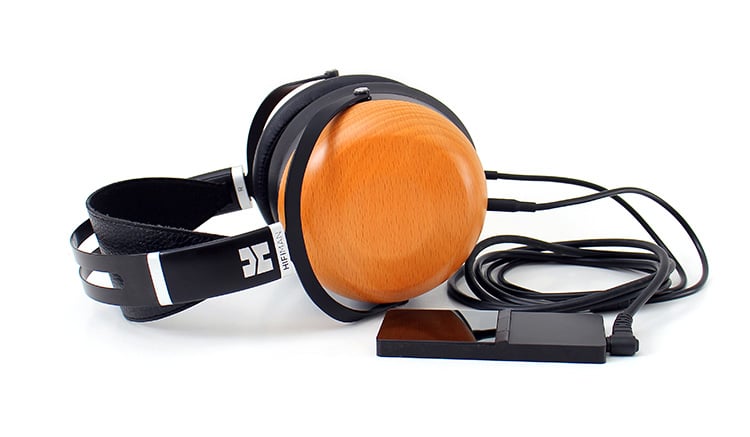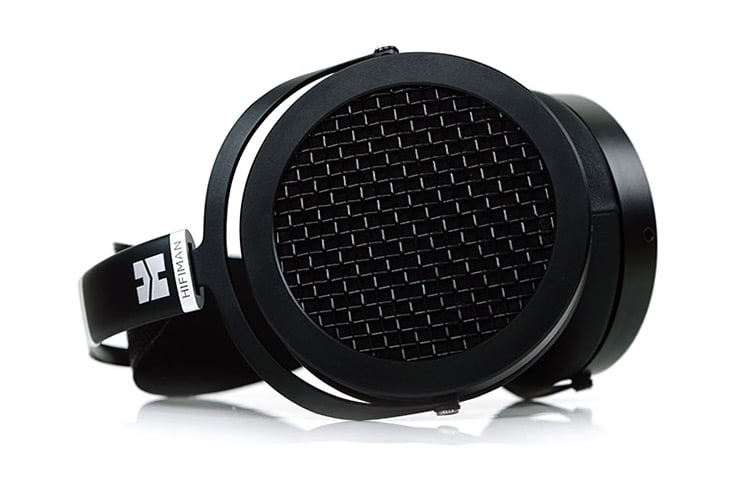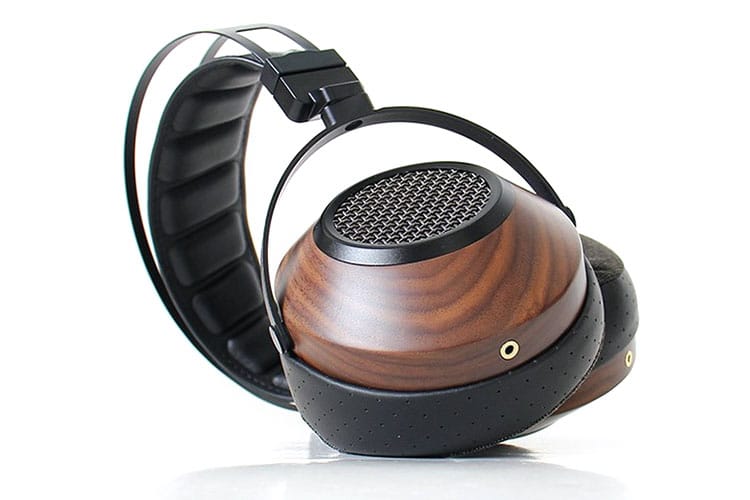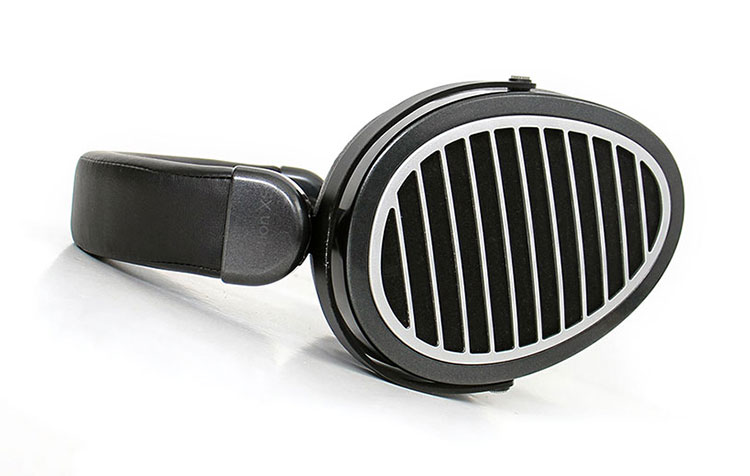Synergy
Efficiency
The HIFIMAN Sundara Closed Back seems more efficient than what the specifications would dictate. In particular, I find the 98db rating to be a lowball number. I would add another five to that number and bring them closer to 103 or 104 perceptively.
You could use whatever you presently have to drive them. The Sundara Closed Back seems to cater to portability because you can power them with most mobile devices.
But I would carry around a dongle DAC minimum just in case. They don’t require a large amount of power at all and a dongle DAC would be more than enough.
They do pair well with most DAPs to the point where most people need not go that far beyond to drive the Sundara Closed Back. The HIFIMAN SuperMini powered them well but I found the combo to be too bright. It preferred the FiiO M11 pro which has sound-shaping abilities.
But they do have an uncanny ability to make YouTube videos and streaming services for example sound full and even interestingly bloomy at times which gives reason as to why it pairs well with DAPs. It seems the low-resolution Youtube files for example bump up the bass to a point where it fills in that frail area some.
Pairings
I would say almost any source will work so long as it’s not offensively poor in quality. The HIFIMAN Sundara Closed Back seems to portray FLAC files in a lean way, and almost clinical in a sense. They do reveal flaws in recordings so warmth is almost imperative if you want to raise the enjoyment bar.
I did pair it with their EF400 which was more than enough to power this set on low gain. I would however pair this set with a warm characterized setup because some solid-state units are too neutral in the low end particularly and that would be a double whammy.
The Hifimman Sundara Closed Back likes for example the iFi audio iDSD Gryphon, especially with the Xbass activated. Most amplifiers with a bass boost feature will work well but that’s according to my taste and you might enjoy a brighter signature which seems to be the general concept at play here.
Isolation
This is another one of the Sundara Closed Back strong points because they block most of the outside world but you still get a small amount, enough that it helps you maintain a good sense of consciousness, far as what’s going on around you. You do get a muffling effect.
Simultaneously, leakage is kept to a minimum. People nearby will not hear much of what you’re listening to. These cans are a good choice for people who are looking for a good-sounding set of cans but worry about bothering others nearby.
I foresee many nighttime sessions and the Sundara Closed Back while the better half sleeps. There were countless times I was spoken to and heard their voice vaguely but the other person never realized how loud I was listening, which was concert level to be exact.
Select Comparisons
HIFIMAN Sundara 2020
$349.00
Technical
Do I even have to describe the HIFIMAN Sundara to you? It just happens to be one of the top-selling headphones of all time. Most of us already know that fact. I bet most of you already own a pair, I do. They’re practically my daily cans.
But should we call them Sundara open back from now on? Unfortunately, willingly or unwillingly they will gain a longer name from now on.
Again, I must say that I don’t see the association here conceptually because both these headphones are worlds apart when you compare their build and implementation details that affect sound quality.
The Sundara open-back driver is larger and sits within a metal cup. It seems the only similarity is the dual 3.5mm connectors because the drivers and their build configurations are different in many ways.
Design
The general differences between these two are many and some are major. If you start with the part you interact with the most which are the pads, the mounting and materials used all changed. The Sundara open back comes with Pali pads which I like but tend not to last that long and need to be replaced often.
As of this time, HIFIMAN has not posted if these new style pads will be put up for sale. Just the same, the ring is of the most importance here. If you damage one of these pads and HIFIMAN has none in stock you could always use the ring with a 100mm aftermarket pad so don’t throw them in the bin. Save those rings.
Performance
There are many differences here. To start the Sundara Closed Back sounds less veiled and more forward-sounding. It’s also more introverted and personal with a higher midrange presence.
The open back does portray a smoother response in the midrange area but there seems to be a more nuanced revelation of detail on the Closed Back. The Sundara Closed Back portrays vocals in an airy, wider manner, the Closed Back is more focused oriented.
The bass seems to be filled in well below the 50Hz mark on the open-back Sundara which is a lacking aspect of the Sundara Closed Back model, however. Most who complain about the original Sundara strangely point to a weak bass response but I find them to be well-extended with an ability to reveal deep notes.
The high frequencies have better dispersion on the open back and they seem to portray a wider panorama, while at the same time demonstrating a further reach as far as high-frequency extension capability. I still feel the Sundara Closed Back, although not as well extended, does give off a better sense of placement with a more pinpoint staging capacity.
SIVGA SV023
Price $ 449.00
Technical
I decided to throw in the recently released SIVGA SV023 into the pit because of the wood cup similarity and although the Sivga is considered an open back I still feel it’s a semi-open back because of the minimum amount of leakage this lightweight headphone emits.
The driver employed here is a single dynamic contrasting the stealth magnet planar magnetic design. The specifics on the SV023, as far as driver composition, are given as a liquid crystal polymer cone with a beryllium center.
The SIVGA SV023 is a 300Ω headphone and one would assume it was not so efficient but it does quite well. It will reap some benefit if you increase the power they receive but not by much.
If you look at some of the tube amplifiers nowadays the one impedance listed as the optimal recommended driveable impedance it’s usually in the 300Ω range.
Design
The SIVGA SV023 headband assembly seems familiar but even more so does the cup design. They look eerily similar to the cup design used on the KHL Ultimate One but I’m not complaining. The SV023 is a handsome headphone overall with custom-angled hybrid pads, lightweight, and wearable for long periods with little discomfort.
The comfort levels are excellent and I’m unsure if it’s attributed to the rather soft clamping force, the softness or girth of the pads, or the angles employed within the headband design.
The stock cable is rather nice as well and caters to a 4.4mm connection. To use a 3.5mm output you must use an included adapter which to some could be a drawback since it’s the most common type. Either way, this wire sure takes the front spot here.
Performance
Both these cans should be used with warm amplification unless you desire a rather bright sound signature. They both are rather neutral overall but I prefer some color, especially in the lower regions.
A friend and I were recently playing around with the SV023 and decided to pair them with an xDuoo TA-26 with stock 6N8P and 6AS7 tubes and the SV023 improved considerably with an increased fun factor over being paired with a clean-sounding solid-state amplifier model.
The previous setup was the iFi Audio HFM combo so all we did was connect the same ZEN signature preamplifier section thru the RCA option since the TA-26 only has a single-ended input stage. Plus for comparison’s sake, the HFM and Xspace features were turned off.
The Sundara Closed Back also gains some needed fun factor from tubes but the SV023 rewards you with a higher sonic gain. The soundstage opens up some and everything seems to warm up and veer itself from sterility which in turn rewards you with a rather pleasant sonic experience.
HIFIMAN Edition XS
$499.00
Technical
If you can manage a taller budget then the Edition XS is a great choice. Overall they’re considered one of the top dogs within the 500 or less budget range. I still believe it to be the most economical way of delving into the HIFIMAN asymmetrical cup design.
If you go up the Asymmetrical line you will find the next model up at around 700 bucks which is almost twice the asking price of the Sundara Closed Back so the XS is quite a bargain at the particular budget level.
One look at the massive asymmetrical cups and two things come to mind, comfort and big sound. The cup size is around 160mm or so and bigger than the Sundara Closed Back cups.
Yes, there is a huge level of comfort to be had here but you can’t just slap on any pad. You have to get them exclusively from HIFIMAN at a reasonable cost or apt for custom and most times more expensive pads.
Design
Some consider the Asymmetrical design to be large but in my eyes, it translates into comfort. The one objection I would put on the floor to discuss is the headband design which seems cookie-cutter and common.
The Edition XS uses the same headband design which for some reason is used on a very varied and wide variety of HIFIMAN cans, from the budget HE400SE up to the high-end HE-R10D. I do prefer the first headband design over the rest. The swivel aspect at this point seems to be gone forever.
One other small preference I do have is that personal taste veers me to prefer a black grille instead of the silver on black but then they would look identical to the Arya. Compromise seems to be a key feature of our beloved hobby.
Performance
I bet you know what I’m going to say, of course, the Edition XS beats the Sundara Closed Back sonically. The bass extension for starters is way better defined and well extended on the XS and it’s immediately obvious with just a quick listen. There’s just more bass presence.
The soundstage is also wider, larger, and more fun to listen to in general. The XS is not a flat can and it has some color in its sound signature but it just makes it more exciting to listen to. However, the midrange emitted off the Sundara Closed Back has a brighter midrange presence in general and is more distinguished in that region.
The one area that separates these opposite-positioned headphones is the closed-back design and the important benefit of isolation and the minimal amount of leakage which is desirable on certain occasions. For example, the XS would be somewhat bothersome due to the high amount of leakage to others.
So if you need privacy and want to be discrete, the Sundara Closed Back is a great option. You get less far as sonic capability compared to the XS but they would most certainly irk the nearby bystander.
Our Verdict
Is the HIFIMAN Sundara Closed Back better than the original Sundara? Each model has its selling points. The Closed Back seems to be unveiled, but it lacks some low-end grunt which can be easily remedied up to a point. So there’s the tradeoff.
If we appropriately use a burger analogy here, this is a well-prepared burger that needs salt, perhaps some ketchup, or perhaps even a slice of cheese. Once added, it becomes a tasty burger. The bass is the missing ingredient in this case.
However, if you shop around for a planar closed back in this price range you won’t find too much competition.
That puts them in a good place market-wise for when you need a closed-back planar that can isolate and not skimp too much on technical ability.
HIFIMAN Sundara Closed Back Specifications
- Frequency Response: 6 Hz to 50kHz
- Impedance: 20Ω @1kHz
- Sensitivity: 98db/mW @ 1kHz
- Cup connectivity: 3.5mm
- Weight: 432 grams






